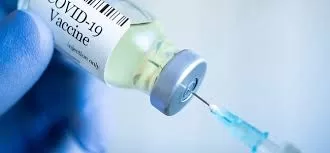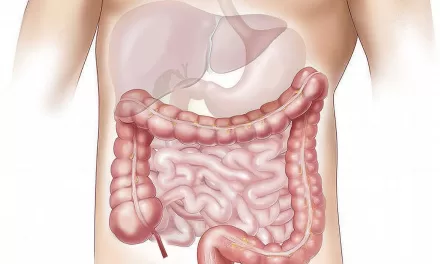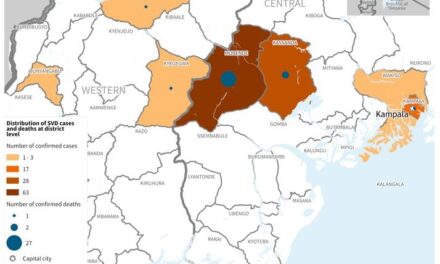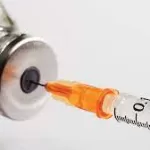
Children and adolescents who received one of the main COVID-19 vaccines were significantly protected from the illness and showed no increased signs of cardiac complications compared to young people who were not vaccinated, according to a new real-world study led by researchers from the Perelman School of Medicine at the University of Pennsylvania and Children’s Hospital of Philadelphia (CHOP). When the Delta variant rose to prominence, the study showed that vaccinated young people were 98 percent less likely to be infected than their unvaccinated peers, and data indicated that the vaccine’s effectiveness decline slightly when the Omicron variant became dominant. The paper was published today in Annals of Internal Medicine.
In their analysis of 250,000 patients with around half of them received at least one dose of the BNT162b2 vaccine (the vaccine produced by a collaboration between Pfizer and BioNTech), the researchers — led by Yong Chen, PhD, and Jeffrey Morris, PhD, both professors of Biostatistics at the Perelman School of Medicine, and Christopher Forrest, MD, PhD, a professor of Pediatrics at CHOP and Penn — covered the periods in which the Delta and Omicron variants became dominant, in mid-2021 and 2022, respectively.
While previous clinical trials established that the vaccines provided strong protection against infection for children and adolescents, limited evidence of the vaccine’s performance existed beyond controlled settings. So, the researchers conducted one of the largest COVID-19 vaccine studies of children and adolescents in the United States with the assistance of data from electronic health records gleaned from a national network of pediatric medical centers, known as PEDSnet.
“Our study has longer follow-up than any previous study, which enabled us to evaluate the real-world, long-term durability of vaccine protection against Delta and Omicron variants,” said Chen. “Further, it covered a diverse representation of U.S. pediatric populations from primary care, specialty care, emergency department, testing centers, and inpatient settings.”
One of the main ideas behind the work, as stated by the study’s first authors — Qiong Wu, PhD, a postdoctoral research fellow at Penn Medicine and Jiayi Tong, a PhD candidate in Biostatistics at Penn — was to help address under-reporting in vaccine status to give a clearer picture of its effects.
Yet, infection prevention wasn’t the study’s only area of focus. The researchers also explored potential effects on risk of heart conditions.
“We found no indication of increased cardiac risks during either variant phase,” said Morris.
During the period of time in which the Delta variant of the SARS-CoV-2 virus emerged and became dominant, the researchers found that adolescents (defined as patients who were 12-to 20-years old) who received the vaccine were approximately 98 percent less likely to be infected or have severe disease compared to those who did not receive it, with no evidence of increased cardiac complications or significant waning infection protection over the subsequent four months.
Vaccination proved strongly protective against the Omicron wave, albeit at a lower magnitude than during Delta. Among adolescents, those who were vaccinated were roughly 86 percent less likely to be infected compared to unvaccinated peers, and their protection against severe illness and ICU admission was similarly high, being approximately 85 and 91 percent less likely, respectively, than the unvaccinated.
Among children, (those who were 5-to-11 years old at the time of vaccination during Omicron), the protection against infection was 74 percent better than unvaccinated peers. Their comparative protection against severe illness and ICU admission stood at 76 and 85 percent, respectively.
During the Omicron wave, the data showed some reduction in effectiveness in the four months following vaccination, while the vaccinated actually had a lower risk of cardiac complications during this time period.
In a follow-up study, the researchers are conducting further work to characterize the direct and indirect impacts of vaccination on outcomes tied to Long COVID, the phenomenon in which symptoms related to the illness linger for months or even years.
Additionally, the researchers believe even longer-term work is needed to better understand how well the vaccines continue to protect their recipients.
“Children and adolescents were the last age group to be enrolled in COVID-19 vaccine clinical trials. Although the pandemic has been declared over, the risk of COVID-19 is present throughout U.S. communities,” Forrest said. “Thus, more information is needed on effectiveness of vaccination delivered to children and adolescents during more recent time periods.”
This research was funded, in part, by the National Institutes of Health (OT2HL161847-01, 1R01LM012607, 1R01AI130460, 1R01AG073435, 1R56AG074604, 1R01LM013519, 1R56AG069880, 1R01AG077820, 1U01TR003709) and the Patient-Centered Outcomes Research Institute’s Project Program Awards (ME-2019C3-18315 and ME-2018C3-14899).











